This is named after the ancient oak tree which stood south of High Street. It was around this tree that the village of Staple Hill developed.
A print and text about The Staple Hill Oak.
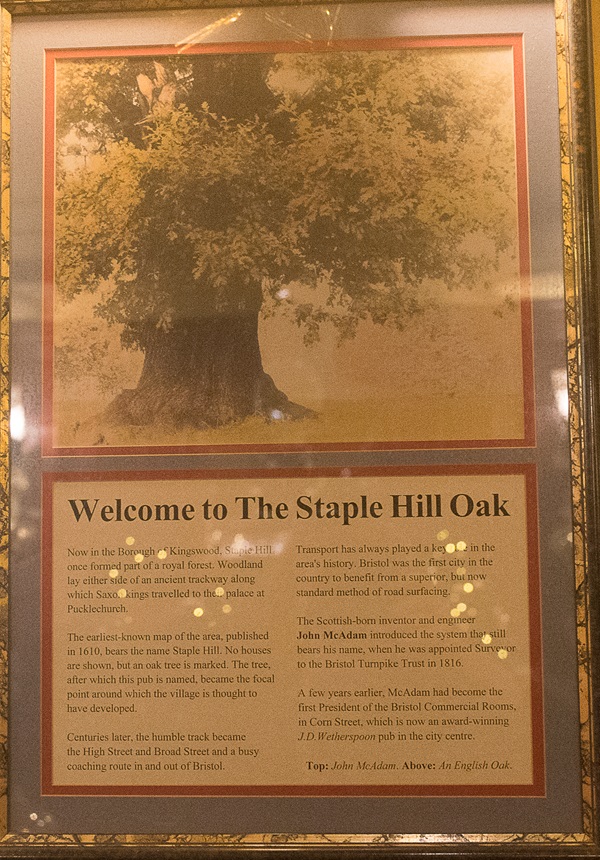
This text reads: Now in the Borough of Kingswood, Staple Hill once formed part of a royal forest, Woodland lay either side of an ancient trackway along which Saxo kings travelled to their palace at Pucklechurch.
The earliest-known map of the area, published in 1610, bears the name Staple Hill. No houses are shown, but an oak tree is marked. The tree after which this pub is named, became the focal point around which the village is thought to have developed.
Centuries later, the humble track became the Hugh Street and Broad Street and a busy coaching route in and out of Bristol.
Transport has always played a key role in the area’s history. Bristol was the first city in the country to benefit from a supervisor, but now standard method of road surfacing.
The Scottish-born inventor and engineer John McAdam introduced the system that still bears his name, when he was appointed surveyor to the Bristol Turnpike Trust in 1816.
A few years earlier, McAdam had become the first president of the Bristol Commercial Rooms in Corn Street, which is now and award-winning JD Wetherspoon pub in the city centre.
Top: John McAdam
Above: An English Oak
Prints and text about Doctor WG Grace.
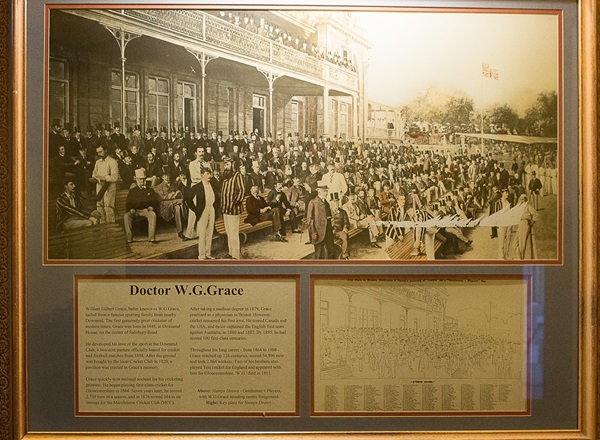
This text reads: William Gilbert Grace, better known as WG Grace hailed from a famous sporting family from nearby Downend. The first genuinely great cricketer of modern times, Grace was born in 1848, at Downend House, on the corner of Salisbury Road.
He developed his love of the sport at the Downend Club, a two-acre pasture officially leased for cricket and football matches from 1894. After the ground was bought by the local Cricket Club in 1920, a pavilion was erected in Grace’s memory.
Grace quickly won national acclaim for his cricketing prowess. He began playing first-class cricket for Gloucestershire in 1864. Seven years later, he scored 2,739 runs in a season, and in 1876 scored 344 in an innings for the Marylebone Cricket Club (MCC).
After taking a medical degree in 1879, Grace practiced as a physician in Bristol. However, cricket remained his first love. He toured Canada and the USA, and twice captained the English Test team against Australia, in 1880 and 1882. By 1895, he had scored 100 first-class centuries.
Throughout his long career – from1864 to 1908 – Grace notched up 126 centuries, scored 54,896 runs and took 2,864 wickets. Two of his brothers also played Test cricket for England and appeared with him for Gloucestershire, WG died in 1915.
Above: Stumps Frawn – Gentlemen v Players, with WG Grace standing centre foreground
Right: Key plate for Stumps Drawn.
A photograph of High Street, Staple Hill c1905.
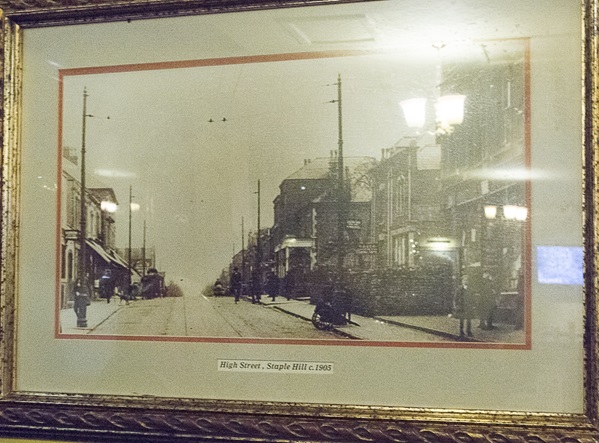
A photograph of High Street, Staple Hill c1914.
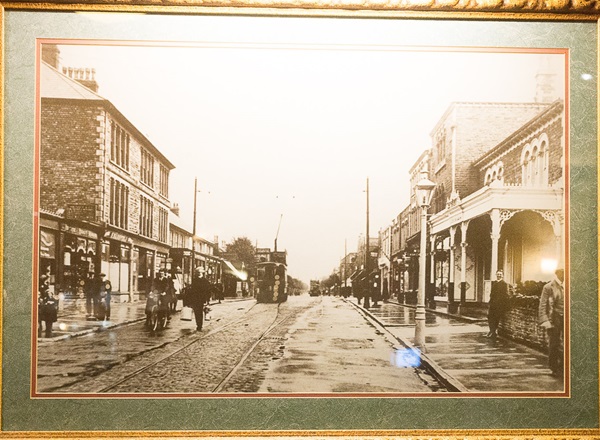
An old print of Bristol in 1731.
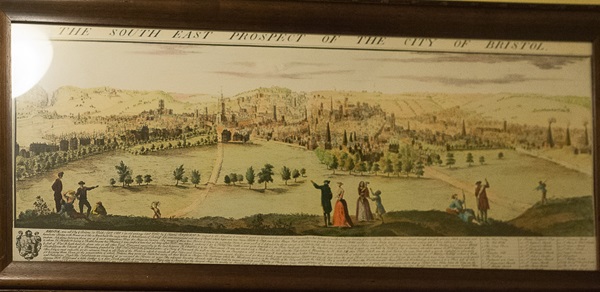
If you have information on the history of this pub, then we’d like you to share it with us. Please e-mail all information to: pubhistories@jdwetherspoon.co.uk